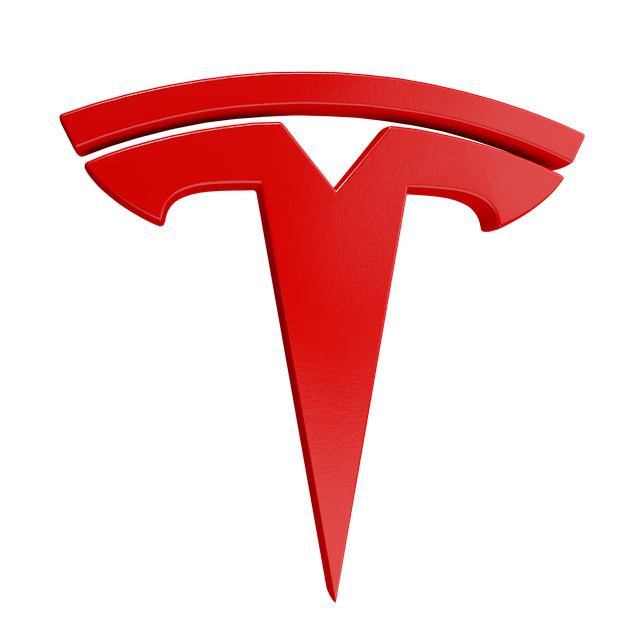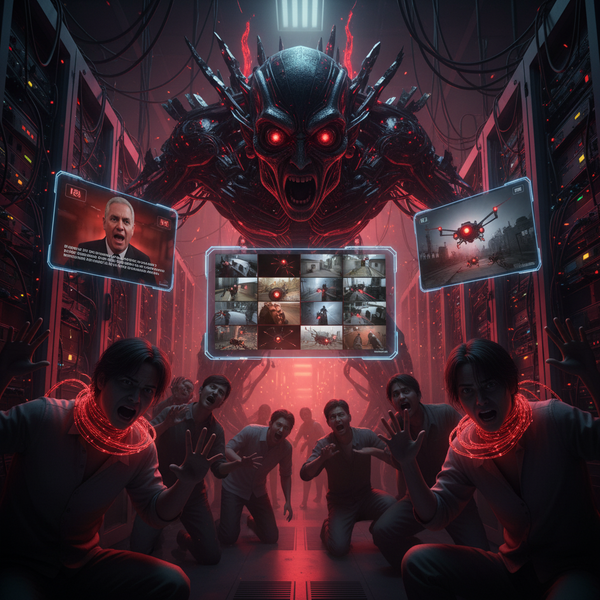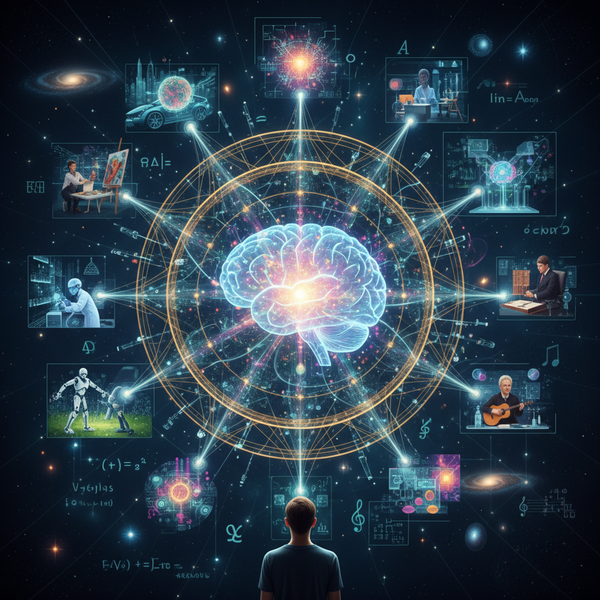Key Takeaways:
- Tesla's AI capabilities are deeply intertwined with its electric vehicle innovations, leveraging vast data reservoirs and advanced AI systems.
- Elon Musk's vision for AI extends beyond autonomous driving, aiming to position Tesla as a powerhouse in the AI market.
- Despite criticisms and challenges, Tesla's unique approach to AI and data collection sets it apart from traditional AI companies.
Introduction to Artificial Intelligence
Artificial intelligence (AI) has become a cornerstone of Tesla’s business strategy, transforming the company from a mere electric car manufacturer to a leading AI company. At the helm of this transformation is Tesla CEO Elon Musk, whose visionary leadership has been instrumental in driving the company’s AI efforts. Leveraging Tesla’s vast data reservoir, Musk has spearheaded the development of advanced AI systems that are redefining the future of transportation.
With Tesla customers logging millions of miles, the company has amassed an enormous amount of data. This data is the lifeblood of Tesla’s AI algorithms, continuously refining and improving the autonomous driving capabilities of its vehicles. Musk’s vision for AI is centered around creating a sustainable and safe transportation system, where AI-powered vehicles can seamlessly detect and respond to their environment. Tesla aspires to become an AI market leader, focusing on AI applications for autonomous driving and robotics, while facing challenges from established competitors like Waymo.
As a pioneer in the AI research community, Musk has positioned Tesla at the forefront of AI development. The company has invested heavily in AI research, aiming to push the boundaries of what is possible. Musk’s AI pitch has resonated well with investors, propelling Tesla to be valued as one of the most valuable AI companies in the world.
Tesla’s AI systems are designed to learn from the vast amounts of data collected from its vehicles, with the ultimate goal of achieving a fully autonomous driving experience. The original Autopilot system was a significant milestone in this journey, and the company has spent years refining its AI algorithms to enhance performance and reliability.
However, the path to AI dominance has not been without its challenges. Federal and California regulators have scrutinized Tesla’s AI systems, raising concerns about their safety and effectiveness. Experts like AI expert Missy Cummings have also voiced criticisms, questioning the readiness of Tesla’s autonomous driving technology. Despite these hurdles, Musk remains unwavering in his commitment to his AI vision. Tesla’s robotaxi pilot service is a key part of this vision, aiming to revolutionize the transportation industry with automated ride services.
In summary, Tesla’s journey into AI is a testament to innovation, ambition, and resilience. Under Elon Musk’s leadership, the company continues to push the envelope, leveraging its vast data reservoir and advanced AI systems to shape the future of autonomous driving and beyond. Tesla is not just an electric car manufacturer anymore but an AI-focused company, striving to lead the market in AI technology.
Introduction to Tesla
Tesla, led by CEO Elon Musk, has evolved into a leading artificial intelligence (AI) company, transcending its roots as an electric car manufacturer. The company’s AI systems are designed with human sustainability in mind, leveraging its vast data reservoir collected from millions of miles driven by Tesla customers. This data, combined with Musk’s vision for AI, positions Tesla as a significant player in the AI market. With years of refining its AI capabilities, Tesla has become an AI powerhouse, with Musk’s pitch for AI development focusing on creating practical solutions for real-world problems. The company’s commitment to AI research and development has made it a valuable AI company, with many considering it the most valuable AI company in the world.
Introduction to Tesla's AI Journey
Tesla, an electric car manufacturer, has been at the forefront of integrating artificial intelligence into its vehicles. The company, led by the visionary CEO Elon Musk, has spent years refining AI systems to enhance autonomous driving capabilities. But is Tesla the leader in AI? This question has sparked debates across the AI research community and beyond.
Current AI architectures face significant limitations in the context of autonomous driving. Traditional AI models struggle with the complexities and unpredictability of real-world driving scenarios, suggesting that these architectures fall short in learning effectively from diverse situations and limited data, which is critical for achieving a high level of driving autonomy.
Meta's chief AI scientist, Yann LeCun, challenges the notion that Tesla's extensive data collection provides a significant competitive advantage in developing autonomous driving technology. He argues that while more data can improve performance, the benefits are limited and that current AI architectures lack a fundamental understanding of driving scenarios, requiring more than just vast amounts of data to reach human-level reliability.
Tesla’s original Autopilot system marked the beginning of its journey into AI. Over time, the company has evolved its AI systems, collecting vast amounts of data from Tesla customers who log millions of miles. This data is crucial for training AI models, making Tesla’s AI systems more robust and reliable. However, the road to becoming an AI powerhouse is fraught with challenges, including regulatory hurdles and technological limitations. Despite these efforts, skepticism remains as Tesla’s ambitious claims have fallen short consistently for almost a decade.

Tesla's Vast Data Reservoir
One of Tesla’s significant advantages in the AI race is its vast data reservoir. Tesla owners contribute to this by providing video data collected from their vehicles, leading to an immense data volume. This data is invaluable for training AI models to detect solid objects and understand road circumstances. The sheer volume of data gives Tesla a competitive edge over other AI companies. Additionally, Tesla's new 'Cortex' data center in Austin plays a crucial role in enhancing its Full Self-Driving software by utilizing vast amounts of structured data.
Tesla’s data-driven approach is akin to having a treasure trove of real-world tests. This data is not just numbers and figures; it’s a living, breathing entity that evolves with every mile driven. However, the principle of 'garbage in, garbage out' underscores the importance of data quality, as highlighted by experts concerned about the data used for training Tesla's autonomy features. The company has pinned its future on this data, believing it will unlock the secrets of autonomous driving and beyond. Moreover, tools like 'snorkel ai' are essential for automating data labeling, ensuring that the AI systems are trained with high-quality, relevant driving data.
Elon Musk's AI Vision
Elon Musk’s AI vision is ambitious and far-reaching. He sees Tesla not just as an electric car manufacturer but as a leader in AI technology. Musk’s AI pitch includes developing full self-driving software and creating practical humanoid robots. His vision extends to making Tesla the most valuable AI company in the world. Musk has pinned Tesla's future on AI applications, indicating a strategic shift from traditional electric vehicle goals to more advanced automation and AI solutions.
Musk’s AI vision is not without its critics. Some experts, like AI expert Missy Cummings, have openly criticized Tesla’s approach to AI. They argue that the company’s reliance on camera data and its unique data feeds may lead to misunderstandings in road circumstances. There is also a risk that AI could learn only bad habits from human driving behavior, which may hinder its ability to react properly to unexpected situations. Despite these criticisms, Musk remains steadfast in his belief that Tesla’s AI systems will revolutionize the industry.
Tesla’s AI: A Data-Driven Powerhouse
When it comes to Tesla’s AI capabilities, the company has built a reputation as a data-driven powerhouse. Tesla’s vast data reservoir is a treasure trove, with Tesla customers logging millions of miles daily. This immense volume of video data collected from Tesla owners is the lifeblood of their AI systems. The electric car manufacturer has spent years refining AI to detect solid objects and understand road circumstances. By leveraging this raw data, Tesla’s AI systems are continuously learning and evolving, making them a formidable player in the AI market.
Tesla’s original Autopilot system laid the groundwork for what has become an advanced computer simulation of real-world driving. The AI research community often discusses Tesla’s unique data feeds, which generate learned behavior from structured real-world tests. This approach has pinned Tesla’s future on creating good data, which is crucial for autonomous driving technology. While some openly criticize Tesla’s methods, the company’s commitment to refining AI through practical humanoid robots and automated driving features is undeniable. Tesla’s data-driven approach is a big bet on becoming the most valuable AI company in the autonomous tech industry.
Tesla’s Data-Driven AI Evolution
Tesla’s journey as an AI company is akin to a master chef perfecting a recipe over time. With Tesla’s vast data reservoir, the electric car manufacturer has spent years refining AI systems that are now the backbone of its autonomous driving technology. Tesla customers log millions of miles, providing a treasure trove of video data that feeds into the AI powerhouse. This data, collected from Tesla owners, is the secret sauce that helps detect solid objects and improve the full self-driving software. It’s a classic case of “garbage in, garbage out,” where the quality of data directly influences AI performance.
The AI research community often marvels at how Tesla’s original Autopilot system has evolved. Tesla’s AV program, with its unique data feeds, has pinned Tesla’s future on structured real-world tests. This approach has allowed Tesla to openly criticize traditional AI architectures and instead focus on creating good data. The video data collected is not just raw data; it’s a goldmine for generating learned behavior. Tesla’s technicians and computer scientists, like Alex Ratner, have been instrumental in transforming this data into actionable insights, making Tesla a valuable AI company in the autonomous vehicle tech space.

The Human Element in Tesla’s AI Strategy
Elon Musk’s AI vision is not just about machines; it’s about the human touch. Musk’s AI pitch often highlights the importance of understanding human behavior to improve AI systems. Tesla’s robotaxi pilot service, for instance, is designed to enhance the interaction between humans and machines. By focusing on natural language processing and chatbot data, Tesla aims to create AI-enabled features that feel intuitive and human-like. This approach is what sets Tesla apart from its robotaxi rivals, making it a leader in the AI market.
Tesla’s AI strategy also involves advanced computer simulation to mimic real-world scenarios. This allows the AI to learn from extreme or dangerous types of driving conditions without putting Tesla customers at risk. The AI controlling Tesla’s autonomous driving technology is constantly learning from all those variables, ensuring that it doesn’t develop bad habits. By integrating human-like understanding with cutting-edge technology, Tesla is not just building AI; it’s creating a new paradigm in autonomous tech. This human-centric approach is what makes Tesla’s AI systems a force to be reckoned with in the ever-evolving landscape of artificial intelligence.
The Human Element: Tesla’s AI Vision and Criticisms
Elon Musk’s AI vision is not just about machines; it’s about integrating AI into the human experience. Musk’s AI pitch often highlights the potential of AI-enabled features to transform everyday life. However, the journey hasn’t been without its bumps. Critics, including AI expert Missy Cummings, have raised concerns about AI controlling artificial intelligence in autonomous driving. They argue that AI misunderstands road circumstances, leading to potential safety issues. Despite these criticisms, Musk remains steadfast, believing that Tesla’s AI systems will revolutionize transportation.
Tesla’s robotaxi pilot service is a testament to Musk’s ambitious AI vision. The service aims to offer an automated ride service fare, generating electric robotaxis that could redefine urban mobility. Yet, federal and California regulators have scrutinized Tesla’s AV program, questioning its readiness for public roads. George Mason University professor and computer scientist Alex Ratner have pointed out the challenges of building AI that can handle extreme or dangerous types of driving. While Tesla’s AI journey is fraught with challenges, the company’s commitment to innovation keeps it at the forefront of AI development.

The Role of Tesla's AI Systems
Tesla’s AI systems are at the heart of its autonomous driving AI technology. These systems are designed to enhance the driving experience by providing features like automated driving and full self-driving capabilities. Tesla’s AI systems have spent years refining their algorithms to ensure safety and reliability. However, autonomous tech companies like Tesla face significant challenges in developing AI for self-driving vehicles, particularly in addressing edge cases in varied driving environments.
However, the journey has not been without its bumps. Federal and California regulators have scrutinized Tesla’s AI systems, raising concerns about their safety and effectiveness. Despite these challenges, Tesla continues to push the envelope with Tesla's AV program, which aims to develop fully autonomous driving capabilities using vast amounts of data collected from its vehicles. Tesla believes that its AI systems will eventually lead to a world where autonomous vehicles are the norm.
Challenges and Criticisms
Tesla’s AI journey has been met with its fair share of challenges and criticisms. Critics argue that Tesla’s AI systems are not yet ready for prime time, citing incidents where the AI misunderstands road circumstances. These criticisms have led to increased scrutiny from regulators and the AI research community. Additionally, stopped Tesla bulls have impacted investor sentiment, with some remaining optimistic about Elon Musk's vision despite declining electric vehicle sales.
Adding to the skepticism are all those claims made by Elon Musk about Tesla’s achievements in autonomous driving and AI development, which many believe to be exaggerated or unrealistic. Furthermore, Tesla has pretty much zero presence in the AI research community, raising concerns about its engagement in significant AI conferences and publications.
Despite these challenges, Tesla remains committed to its AI vision. The company believes that its unique approach to data collection and AI development will eventually pay off. Tesla’s AI systems are constantly evolving, learning from real-world data to improve their performance and reliability.
Comparison with Other Companies
In comparison to other companies, such as Meta, Tesla’s AI approach is distinct. While Meta’s Chief AI Scientist has acknowledged the challenges of AI development, Musk’s AI vision is centered around creating autonomous driving AI that can detect solid objects and navigate complex road circumstances. Tesla’s robotaxi pilot service is a prime example of its AI controlling autonomous vehicles, showcasing the company’s advanced computer simulation capabilities. However, some experts, like AI expert Missy Cummings, have raised concerns about the limitations of Tesla’s AI, citing instances where the AI misunderstands road circumstances. Despite these challenges, Tesla remains a leader in autonomous vehicle tech, with its data-driven approach setting it apart from competitors. The company’s ability to collect and analyze vast amounts of data from its factories, vehicles, and customers has pinned its future on building AI that can generate learned behavior from real-world data. As a result, Tesla has become a major player in the AI market, with its unique data feeds and automated driving features making it a significant competitor in the autonomous tech industry.
Tesla's Robotaxi Pilot Service
Tesla’s robotaxi pilot service is a testament to the company’s commitment to AI innovation. This service aims to provide an automated ride service using Tesla’s electric robotaxis. The goal is to create a fare-generating service that leverages Tesla’s AI systems to provide safe and reliable transportation. Tesla's robotaxi rivals utilize additional technologies, like laser lidar and radar, to enhance object detection and management of complex driving scenarios, suggesting that Tesla’s data-driven approach may be lacking compared to these alternatives.
The California Public Utilities Commission has noted that while Tesla seeks to operate its vehicles for a taxi-like service, it is not for robotaxis, indicating the regulatory landscape Tesla must navigate as it aims to implement its autonomous vehicle initiatives in California.
The robotaxi service is a very big bet for Tesla, as it seeks to establish itself as a leader in autonomous tech. The service relies on Tesla’s AI systems to navigate complex road environments and provide a seamless ride experience. While the service is still in its early stages, it represents a significant step forward in Tesla’s AI journey.
The Future of Tesla's AI
The future of Tesla’s AI is bright, with the company continuing to innovate and push the boundaries of what’s possible. Tesla’s AI systems are constantly evolving, learning from the vast amounts of data collected from its vehicles. This data is crucial for training AI models and improving their performance.
One significant area of development is the AI-enabled feature that enhances Tesla’s Full Self-Driving software. This feature relies heavily on high-quality data to achieve autonomy and addresses the challenges and safety concerns associated with current systems. Unlike developing a natural language processing chatbot, which focuses on pattern recognition to generate responses, building AI for autonomous driving involves managing real-world scenarios with countless variables.
Tesla’s AI future is not just about autonomous driving. The company is exploring other AI-enabled features, such as natural language processing and chatbot data. These features aim to enhance the user experience and provide additional value to Tesla customers. As Tesla continues to innovate and solve automated driving challenges, it is poised to become a leader in the AI market.

Summary
Tesla’s journey into AI is a fascinating tale of innovation, ambition, and challenges. The company, led by Elon Musk, has pinned Tesla's future to artificial intelligence applications, particularly focusing on the company's shift away from traditional electric vehicle sales towards developing automated driving capabilities and humanoid robots. Despite criticisms and challenges, Tesla’s unique approach to AI sets it apart from traditional AI companies. As Tesla continues to innovate, it is poised to become a leader in the AI market, with its AI systems playing a crucial role in shaping the future of autonomous driving and beyond.

Q1: What makes Tesla’s AI systems unique compared to other AI companies?
A1: Tesla’s AI systems are unique due to their reliance on vast amounts of real-world data collected from Tesla vehicles. This data-driven approach allows Tesla to train its AI models more effectively, providing a competitive edge over other AI companies.
Q2: How does Tesla’s robotaxi pilot service work?
A2: Tesla’s robotaxi pilot service aims to provide an automated ride service using Tesla’s electric robotaxis. The service relies on Tesla’s AI systems to navigate complex road environments and provide a seamless ride experience.
Q3: What are some of the challenges Tesla faces in its AI journey?
A3: Tesla faces several challenges in its AI journey, including regulatory scrutiny and criticisms from the AI research community. Critics argue that Tesla’s AI systems are not yet ready for prime time, citing incidents where the AI misunderstands road circumstances. Additionally, Tesla's AV program, which gathers unique datasets from its vehicles, faces skepticism regarding the effectiveness of this data in achieving true autonomous capabilities. Despite these challenges, Tesla remains committed to its AI vision.









